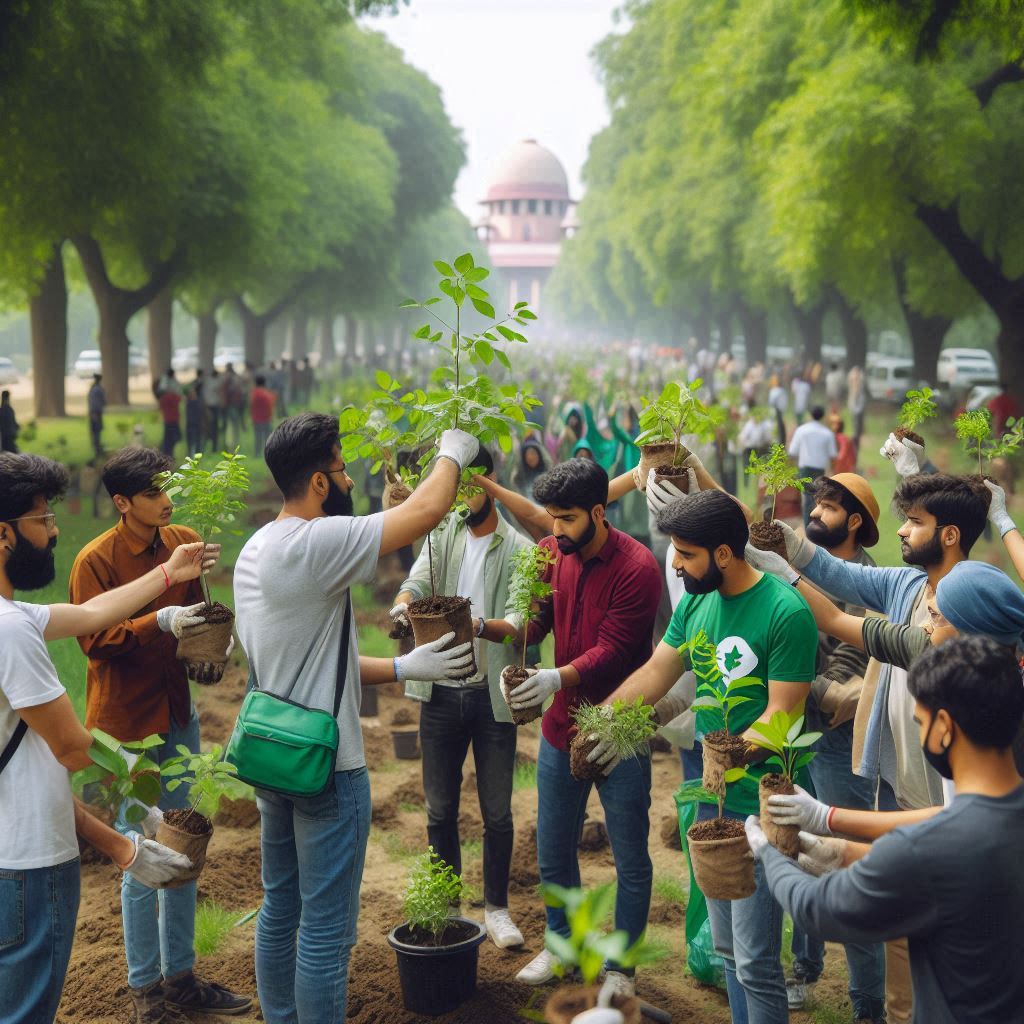Delhi, the heart of India, faces a persistent and growing challenge—air pollution. Over the past decade, pollution levels have skyrocketed, severely impacting public health and the environment. This article examines the changes in air pollution over the last ten years, its current state in 2024, advanced technologies combating pollution, and practical solutions for a cleaner future.

The Last 10 Years: How Pollution Has Changed in Delhi
Increasing Air Pollution Levels
Between 2013 and 2024, Delhi’s air quality has seen significant deterioration. According to the Central Pollution Control Board (CPCB), the Air Quality Index (AQI) in winter often exceeds 400, categorizing it as “severe.” This period has witnessed the following key contributors:
- Vehicular Emissions: The number of vehicles in Delhi increased exponentially, making traffic the largest contributor to PM2.5 levels.
- Industrial Activities: Unregulated emissions from factories and small-scale industries added to the toxic air.
- Crop Stubble Burning: Farmers in Punjab and Haryana burn stubble every winter, creating hazardous smog that blankets Delhi.
Key Events and Trends
While air pollution worsened overall, some temporary improvements were observed:
- COVID-19 Lockdown (2020): Delhi witnessed its cleanest air in decades due to restricted vehicular and industrial activities.
- Government Initiatives: Introduction of BS-VI fuel and the odd-even traffic scheme brought minor improvements but failed to solve the core problem.

The Current Status of Delhi’s Air in 2024
Severe Air Quality
In 2024, Delhi‘s AQI frequently remains in the “very poor” to “severe” category, especially during winters. PM2.5 and PM10 levels are alarmingly high, exceeding WHO guidelines by over 10 times. A combination of factors contributes to this:
- Smog Formation: A mix of vehicular emissions, industrial smoke, and burning of biomass leads to the formation of smog during colder months.
- Temperature Inversions: Winters trap pollutants close to the ground, further degrading air quality.
Impact on Health
The deteriorating air quality has severe repercussions for public health:
- Respiratory diseases like asthma and bronchitis are on the rise.
- Long-term exposure increases the risk of cardiovascular diseases and lung cancer.
- Children and the elderly are especially vulnerable to air pollution-related health issues.
.jpeg)
Technologies and Innovations to Combat Air Pollution
1.Electric Vehicles (EVs)
The Delhi government’s push for electric vehicles is a significant step toward reducing vehicular emissions. Subsidies and the installation of EV charging stations across the city aim to make EVs accessible to the public.
2.Smog Towers
In 2024, Delhi installed several smog towers designed to filter particulate matter from the air. These towers can purify air in a radius of about 1 km and are part of experimental efforts to tackle pollution hotspots.
3.Crop Residue Management
To address stubble burning, eco-friendly technologies like Happy Seeder Machines and bio-decomposers have been introduced to farmers in neighboring states.
4.Real-time Monitoring
Advanced air quality monitoring systems now provide real-time data to policymakers and citizens, enabling better decision-making and awareness.
.jpeg)
Steps Individuals Can Take to Reduce Air Pollution
1.Reduce Vehicle Usage
Citizens can contribute by opting for carpooling, using public transport, or switching to bicycles and electric vehicles.
2.Energy Efficiency
Using energy-efficient appliances and reducing electricity consumption can minimize power plant emissions.
3.Tree Plantation
Planting trees in residential areas can help absorb carbon dioxide and improve air quality locally.
4.Waste Management
Avoiding the burning of garbage and promoting proper waste disposal can significantly reduce toxic fumes in the air.

Government Policies and Their Impact
Odd-Even Traffic Scheme
The odd-even traffic scheme, implemented during high pollution periods, restricted vehicles on the road based on their registration number. While it reduced emissions temporarily, its long-term impact remains negligible.
Bharat Stage VI (BS-VI) Fuel
The shift to BS-VI fuel in Delhi was a game-changer, reducing sulfur content in emissions by up to 80%. However, its benefits are overshadowed by rising vehicle numbers.
Graded Response Action Plan (GRAP)
Implemented in 2017, GRAP categorizes actions based on AQI levels. For example:
- Closure of schools and construction sites during “severe” AQI.
- Ban on diesel generators and heavy vehicles during peak pollution seasons.
The Role of Stream App in Environmental Awareness
One of the promising ways to create awareness about air pollution is through digital platforms like the Stream App. Stream App offers a curated collection of documentaries, short films, and live discussions focused on environmental issues, including air pollution. By leveraging the power of streaming, people can stay informed and take actionable steps to fight pollution.
Backlink Anchor Text: Explore Stream App to Learn More About Environmental Initiatives
The Way Forward: Long-term Solutions
1. Urban Planning
Delhi needs better urban planning that promotes green spaces and discourages high-density traffic zones.
2. Renewable Energy
Shifting from coal-based power to solar and wind energy is critical to achieving sustainable development goals.
3. Strict Industrial Regulations
Stringent checks on industries to monitor emissions and impose penalties for violations are essential.
4. Public Awareness Campaigns
Education and awareness campaigns about pollution’s harmful effects can motivate citizens to adopt eco-friendly habits.
.jpeg)
Conclusion
Delhi’s air pollution crisis is a complex problem requiring collective efforts from the government, industries, and citizens. While technological advancements like EVs and smog towers show promise, long-term solutions lie in sustainable practices and strict enforcement of environmental laws. With the right policies and public participation, a cleaner and healthier Delhi is achievable.

